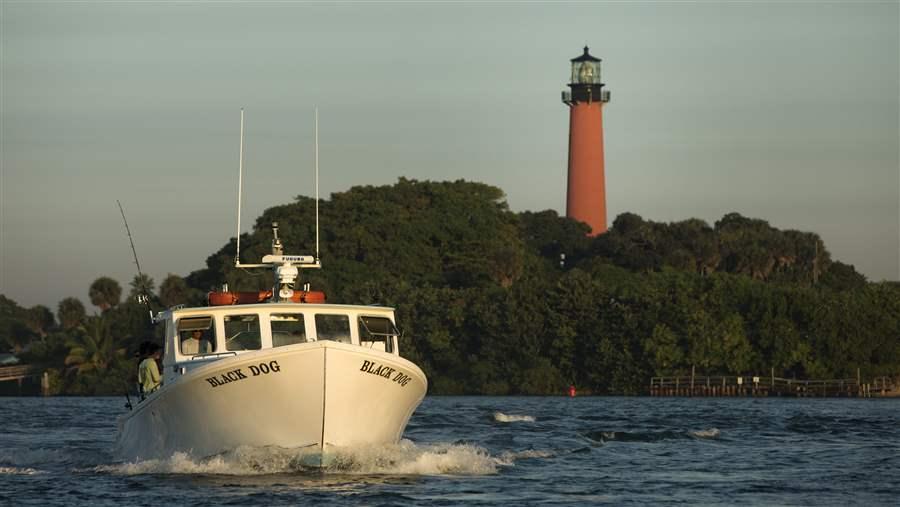Southeast Ecosystem Plan Helps Marine Life, Fishermen, and the Ocean
Big-picture approach calls for managing fisheries to benefit current and future generations

A fishing boat passes the South Florida coast. From the eastern Sunshine State through North Carolina, fishery managers are now taking a more comprehensive approach to ocean fishing rules.
The Pew Charitable TrustsWhen you get a physical exam, your doctor doesn’t check only your blood pressure. He or she also takes note of heart rate, weight, temperature, and other details—an attempt to learn whether all those data points add up to a healthy you.
That’s similar to the big-picture approach some Southeast fishery managers are taking to guide their decisions about fish. Instead of focusing on individual species when setting fishing rules, an updated fishery ecosystem plan from the South Atlantic Fishery Management Council sets the foundation for managers to consider the broader marine ecosystem of which they are a part. That means addressing such things as what fish eat, what eats them, where they live, and how they are affected by changing ocean conditions, such as warming waters.
The council, which oversees fishing from North Carolina to East Florida, approved the updated plan this month. It’s designed to provide council members with a clear description and understanding of the physical, biological, and human components that make up the ecosystem within which fisheries are managed.
It’s the only plan of its kind in the Southeast. The updates have added a couple of very important factors to the plan: understanding the relationship between prey and predators and factoring in effects of climate change on fish populations.
To put those newer aspects of the plan into action, the council hopes to coordinate with other fishery agencies and councils to track and study where fish populations are moving—or are expected to go—in response to warming waters. Early studies already show that some fish are on the move, with species appearing in places they’ve never been observed while disappearing from some of their historic habitats. That means fishery councils in different regions will have to work more closely together when making fishing rules.
The South Atlantic Council also plans to more fully analyze the role of small prey fish in the ecosystem and the food needs of larger, predator species such as groupers and snappers. And the council has pledged to identify cost-effective ways to conduct more research to better understand these food webs.
It may not be as personal as a doctor’s visit, but big-picture fishery management will help conserve our valuable marine resources and support healthy commercial and recreational fisheries, along with seafood and coastal tourism businesses, for generations to come.
Holly Binns directs The Pew Charitable Trusts’ efforts to protect ocean life in the Gulf of Mexico, the U.S. South Atlantic Ocean, and the U.S. Caribbean.












